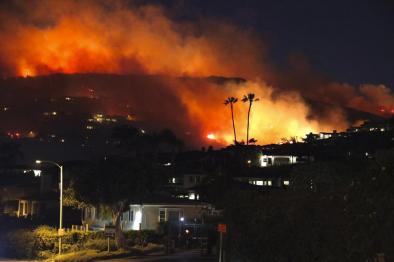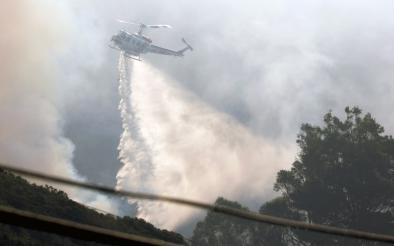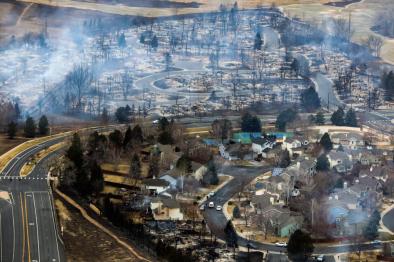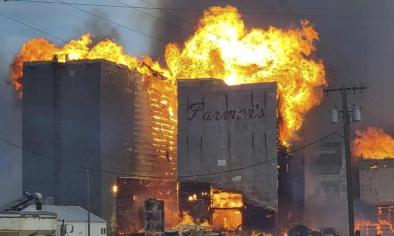From Allergies To Declining Business, Warming Winters Affect Everyday Life
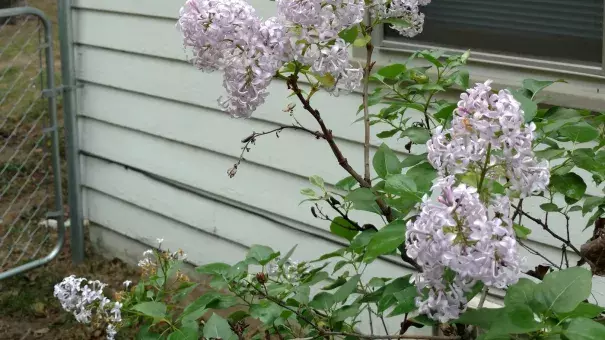
Climate Signals Summary: Climate change is increasing temperatures in all season, but in many places winter is warming the fastest. Warm winters have a variety of impacts from snowpack decline to increased incidences of vector borne diseases to permafrost melt.
Article Excerpt: For many parts of the United States this winter has been one of the warmest on record. In fact, as the climate heats up, winters are warming faster than any other season. We recently asked how people around the country are seeing the effects of this in their everyday lives. Here's a sample of what we heard back.
...
Thomas Germanson grew up near a lake in Madison, Wis., in the 1960s. In the winter, he says, the frozen water was a perfect place to take model yachts ice boating — meaning they glided on the ice. Having open water into the new year was a rare occurrence.
"Sailing in the Upper Midwest is unheard of after Thanksgiving through March. Ice boating was the norm during this time," says Germanson.
But he finds it's not the norm anymore. Now, the radio-controlled boats can simply sail through the water.
...
Not everyone with a winter hobby is faring the same. Sandy Page grew up ice skating on a rural Pennsylvania wetland in the 1970s and '80s.
"Tall plants broke the pattern of ice, so rather than skating in a straight line, I had to pay attention and navigate an obstacle course of foliage. The ice was very clear, and it was easy to see the aquatic life below," Page says. "It is no longer possible to do these activities. Worse, my kids, still young, will never have known them."
...
For Jeff Pederson, warmer winters are part of the reason he decided to move across the country last fall, from Fairbanks, Alaska, to Minneapolis, Minn. Pederson says his apartment in Alaska was becoming difficult to live in after sinkholes started forming right outside.
"The destruction of our subdivision by thawing permafrost had accelerated noticeably over the last 10 years," Pederson says. "Our apartment was becoming unlivable. Roads at an increasing rate are collapsing because of thawing permafrost."
...
Kym Chaffin of Stillwater, Okla., says her allergies have gotten worse in recent years as winters have been getting warmer.
"The allergies here have always been bad, but once there was a respite of a few months during winter. Now there is no time when they're not active," Chaffin says.
Lena Welch of Columbus, Ohio, also deals with allergies year round.
"December and January are my two low allergy vacation months. I can go outside and don't feel sick constantly. This gift wasn't here at all this year," Welch says. "Mold counts are high and I have been itchy and stuffy forever."
According to the most recent National Climate Assessment, rising temperatures can influence plant-based allergens, hay fever and asthma.
Janalee Stock of Athens, Ohio, is worried about an increase in the tick population. Last year, Stock was diagnosed with Lyme arthritis after being bitten by a tick.
...
The number of Lyme disease cases has tripled in the past 30 years for many reasons, and researchers say warming winters are a factor in some places.
...
Heidi Steltzer is a mountain scientist and professor at Fort Lewis College in Durango, Colorado. She conducts snow experiments to determine how changing snowpack and snowmelt affect plants, water supply and people.
"Snow is magic in how it moves water into the Earth to sustain plants and people. It insulates the plants and ground. It radiates energy to the sky, keeping mountains wetter and cooler," Steltzer says.
Steltzer says that when warming brings temperatures above freezing, people see more rain than snow.
"Rain pours while snow seeps. Seeping is the magic ingredient for sustaining water supply," she says.
Related Content
